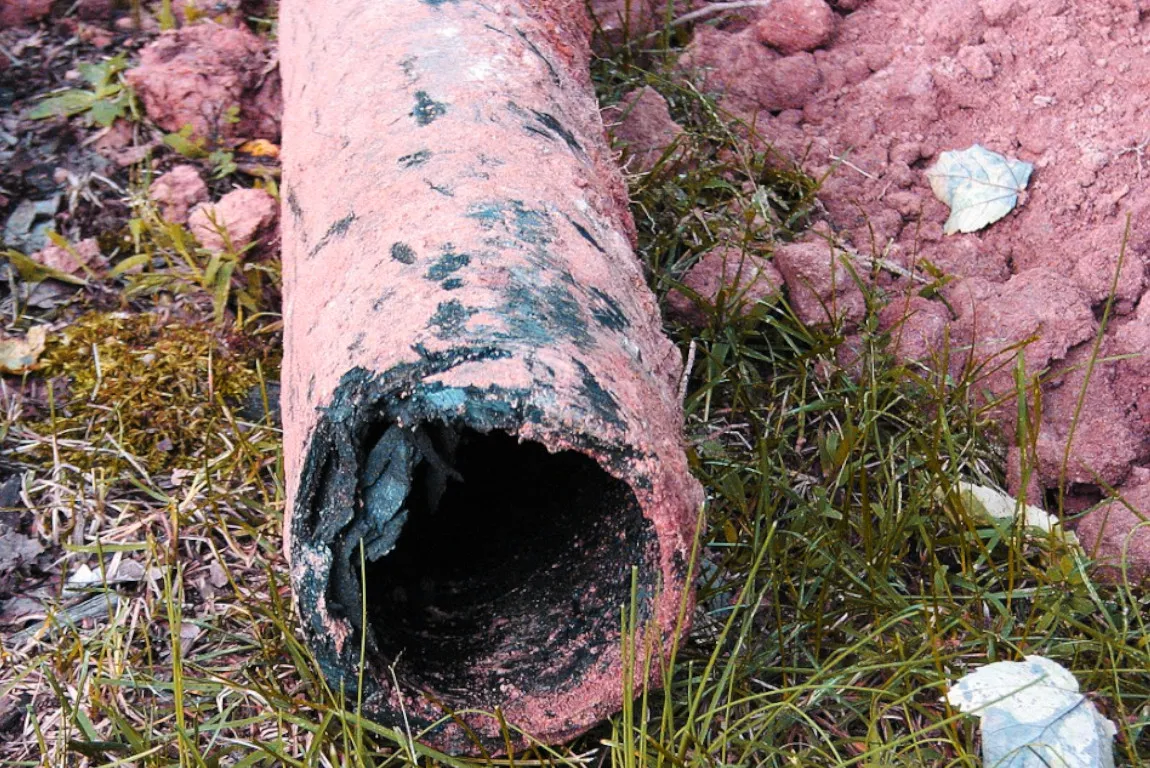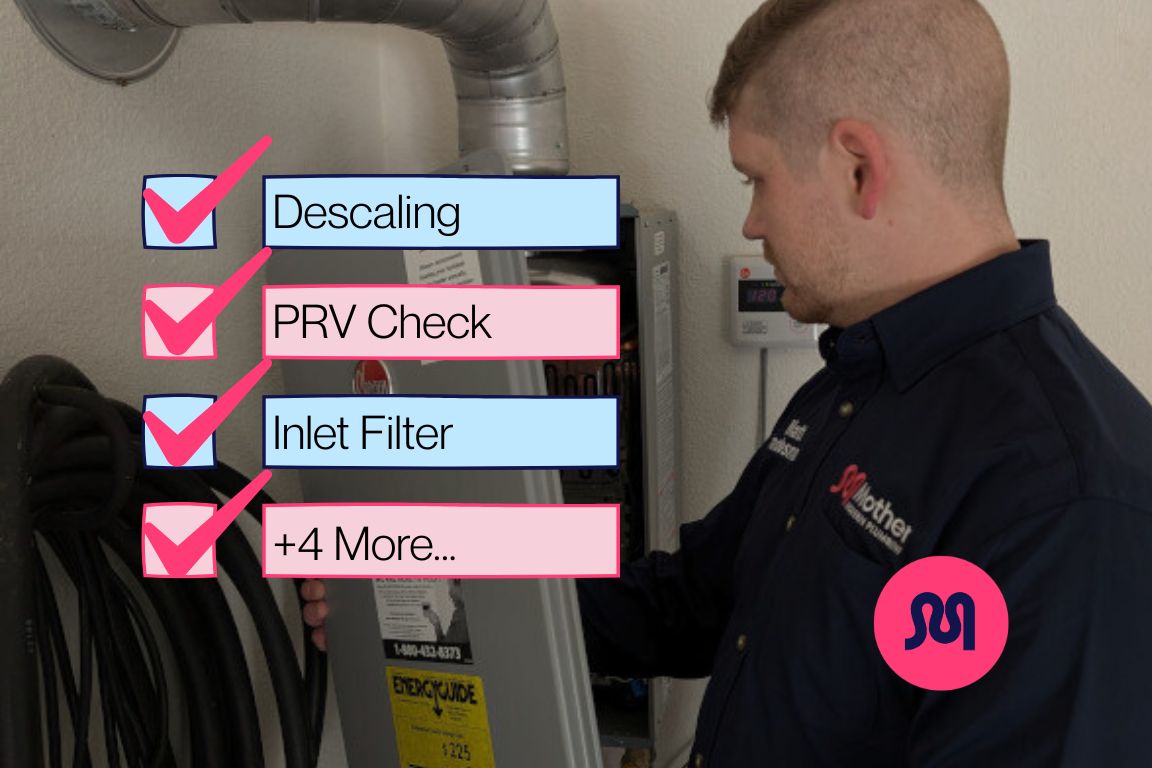Fast Plumbing Answers: Are Orangeburg Pipes Bad?

table of contents
table of contents
Was your home built between 1940 and the 1970s? Have you noticed sewer line issues — sags, bellies, even collapsed lines? A common culprit is Orangeburg pipes. But how do you know if you have them, and how can you fix the problem?
Don’t worry: we’ll answer all your questions in 2 minutes or less.
We’re Mother, a Dallas-Fort Worth plumbing company that provides dependable, hassle-free modern plumbing for homeowners who value quality. If you need proper gas line installation and sizing advice, we’re here to provide you long-term plumbing solutions that last.
{{sewer-line-repair-and-replacement="/services/sewer-line-repair-and-replacement"}}
Orangeburg Pipe Materials Weren’t Built to Last
Master Plumber Steven Smith explains the dangers of existing Orangeburg pipe materials in this quick video:
Orangeburg pipes were a popular sewer line material between 1940 and 1970 in American homes. They offered a cheaper alternative for homeowners, especially during wartime when metal shortages made cast iron unavailable.
The problem: people got what they paid for. Marketers billed Orangeburg as a durable pipe material that lasted up to 50 years. This wasn’t the case — most Orangeburg pipe systems lasted half that long.
Orangeburg pipes aren’t made from metal or PVC. They’re basically heavy layers of paper coated with tar. Our Master Plumber Steven Smith explains why that’s dangerous:
“it was basically just tar paper that was rolled up, and they used that for sewer lines for a while. When we find existing Orangeburg pipes, they are heavily compressed and damaged. It wasn’t very durable material.”
3 Ways Existing Orangeburg Pipes Threaten Your Home

Still have Orangeburg pipes in your sewer line? Watch them closely — they expose your plumbing to 3 significant problems:
- Compression and Collapse: Orangeburg pipes deform and collapse under the weight of the soil above them. The longer they’re in service, the worse compression gets.
- Root Intrusion: The pipe material is relatively soft and porous. It’s easier for tree roots to penetrate the sewer line in search of water — this causes cracks and blockages.
- Sewer Bellies: Over time, sections of the pipe can sag, creating low points (“sewer bellies”) where wastewater and debris accumulate. This causes sewer backups and slow drains.
Orangeburg pipes perform especially poorly in North Texas. Our clay soil expands and contracts based on moisture — it shifts, swells and sinks easily. This constant soil movement paired with unreliable pipe materials is a sewer nightmare waiting to happen.
If you have existing Orangeburg pipes, they’re beyond their expected lifespan. Replace them now, before they cause raw sewage backups in your home, major sewer repair projects, and structural damage to your home and property.
{{sewer-line-repair-and-replacement="/services/sewer-line-repair-and-replacement"}}
How to Identify Orangeburg Pipes in Your House
If your Dallas-Fort Worth home was built between 1940 and 1970, check for Orangeburg pipes.
“Orangeburg pipe was used a lot between 1940 and 1970 during material shortages,” Steven explains. “Metal wasn't abundant during the wars, and Orangeburg was cheaper and lightweight."
If your home was built within this timeframe and hasn't had its sewer lines replaced, there's a good change that Orangeburg pipes are present.
Visual confirmation isn't possible without excavating your sewer line. Thankfully, there are 3 other clues that suggest their presence:
- DFW Home Construction Date: As mentioned, homes built between the 1940s and 1970s are the most likely candidates.
- Recurring Sewer Issues: Frequent backups, slow drains, or persistent root intrusion problems in older homes are indicators of deteriorating Orangeburg pipes.
- Prior Plumbing Records: Check data from recent plumbing service calls. Those records often indicate the types of pipe materials in your home. I
Ultimately, the only definitive way to identify Orangeburg pipes is through a professional inspection. Mother’s plumbing experts conduct hundreds of sewer line inspections for DFW homeowners each year — it’s the best way to analyze your existing sewer system.
{{dallas-sewer-repair-trenchless-saves-you-2400="/blogs/dallas-sewer-repair-trenchless-saves-you-2400"}}
Found Orangeburg Pipes? Here's What to Do Next

Do you have (or suspect) Orangeburg pipes in your Dallas-Fort Worth home? Fast action is crucial — these “tar paper pipes” are a ticking time bomb for sewer repair issues.
Stop reading, and these 4 things immediately:
- Schedule a Professional Plumbing Inspection: Call Mother Modern Plumbing for a thorough inspection of your sewer line. Ask for a sewer camera inspection for a non-invasive way to confirm your pipe materials.
- Ask for Professional Advice: Are your Orangeburg pipes showing signs of collapse? Is there significant root intrusion? Mother’s expert plumbers offer clear, professional evaluation and provide the best course of action.
- Consider Replacement: The best long-term for Orangeburg is always replacement, due to their structural limitations. They’re going to fail eventually — best to replace them before they cause damage.
- Explore Replacement Options: Trenchless sewer line repair is a non-invasive, cost-effective way to replace old sewer pipes without excavation. Schedule 40 PVC is the best material for your replacement sewer line.
Never DIY sewer line replacement. It’s a complex job, and it requires the proper permits and specialized equipment.
Replace Orangeburg Pipes and Save Green
Concerned about Orangeburg pipes in your home? Don't wait until you experience a messy, expensive sewer backup.
Call us if your home was built between 1940-1970, or you have recurring sewer line issues. We’ll send a plumber for a fast comprehensive assessment and sewer line camera inspection.
We're here to provide fast and reliable solutions to ensure your plumbing system is functioning correctly for years to come.
{{sewer-line-repair-and-replacement="/services/sewer-line-repair-and-replacement"}}




